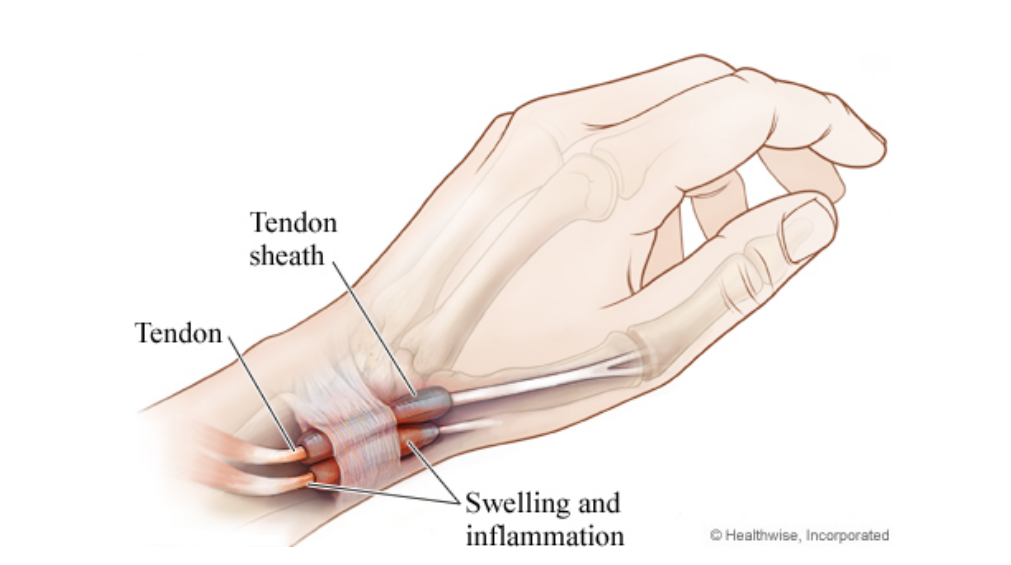De Quervain’s tenosynovitis causes swelling of the tendons around the base of your thumb, resulting in tenderness and pain along the inside of your wrist. This condition can make turning your wrist, making a fist, or grasping an object uncomfortable.
What is De Quervain’s Tenosynovitis?
What is De Quervain’s Tenosynovitis?Tendons are soft tissues that attach muscle to bone. Two of the primary tendons that help move your thumb extend through a passageway in your wrist called a sheath. The tendons are covered by a slippery tissue called synovium, which helps them slide smoothly through the sheath.

In people with de Quervain's tenosynovitis (also known as de Quervain's syndrome, de Quervain's disease, or de Quervain's tendinosis), the tendons become swollen or the sheath thickens. This puts pressure and friction on the tendons and inhibits their ability to slide smoothly through the sheath, causing inflammation and pain.
Signs & Symptoms of De Quervain’s Tenosynovitis
SymptomsIf you have de Quervain's tenosynovitis, you may experience the following symptoms:
- Pain over the thumb side of the wrist. This is the main symptom of de Quervain’s tenosynovitis. The pain may appear either gradually or suddenly. Pain is felt in the wrist and can travel up the forearm. The pain is usually worse when the hand and thumb are in use. This is especially true when grasping, pinching, or lifting objects, or when you twist your wrist.
- Feeling a sensation of catching or snapping when you move your thumb
- Swelling over the affected area. In some cases, a cyst forms
- Difficulty moving your thumb or wrist due to discomfort
What Causes De Quervain’s Tenosynovitis?
CausesDe Quervain's tenosynovitis most often happens from overuse, when you do too much of a certain type of movement (repetitive stress injury). It may also result from a direct injury to the thumb or rheumatoid arthritis.
Common gripping activities that can cause de Quervain's tenosynovitis include:
- Racquet sports
- Gardening
- Frequent lifting of an infant or a young child
- Using tools such as a hammer
- Skiing
Risk Factors
Risk FactorsPeople at increased risk of de Quervain's tenosynovitis include:
- Women
- People who are pregnant or breastfeeding
- People with rheumatoid arthritis
- Childcare workers who frequently lift young children
- Athletes such as tennis, racquetball, and squash players and skiers
- Workers whose jobs require repetitive use of hand tools
- People who garden
Prevention
PreventionThere are numerous steps you can take to prevent the chance of developing de Quervain's tenosynovitis:
- Avoid repetitive wrist movements
- Take frequent breaks if your job or hobby puts repetitive strain on your wrist
- Consider doing certain de Quervain's tenosynovitis exercises that can stretch your thumb and wrist and relieve the pressure on those joints
- Wear a splint or brace to provide support and limit movement in your thumb and wrist during your activities
Trust NewYork-Presbyterian for De Quervain’s Tenosynovitis Care
If thumb or wrist pain is interfering with your daily activities, visiting a hand specialist can help. The hand surgeons and occupational therapists at NewYork-Presbyterian Columbia Orthopedics are experts in the care of de Quervain's tenosynovitis and other conditions affecting the hand, wrist, and arm. Our team will carefully assess your symptoms and provide the most effective treatment to meet your needs. Call us to make an appointment for a consultation.



